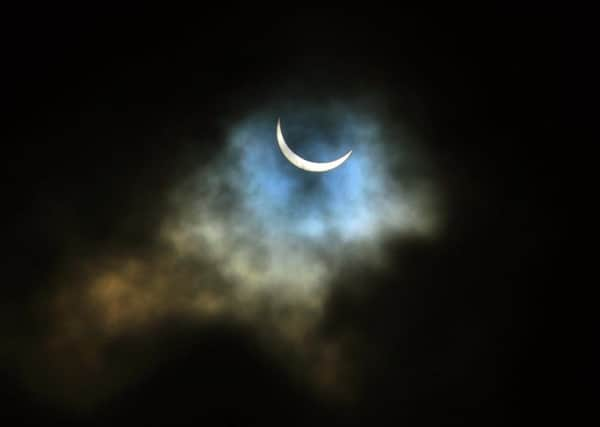We can all learn from the upcoming eclipse


While only people in the US will be able to see the total eclipse – in which the moon completely blocks the light from the sun – those living in parts of South America, Africa and Europe should be able to see at least a partial solar eclipse.
Solar eclipses occur when the moon passes between the Earth and the sun so that it blocks part or all of the sunlight as viewed from a particular location on our planet.
Advertisement
Hide AdAdvertisement
Hide AdEarth is the only planet in the solar system where this can happen in this way.


This is because of the moon’s size and its relative distance from the sun – when viewed from the Earth, it can identically cover the bright solar disc to reveal the tenuous, wispy outer atmosphere of the star (called the solar corona).
An eclipse does not happen every time the moon travels around the Earth.
This is because its orbit has a slight inclination (about five degrees) relative to our planet’s journey around the sun.
Advertisement
Hide AdAdvertisement
Hide AdHowever, when aligned correctly, the result is an awesome, emotional experience.


Once the eclipse has begun, the moon continues to eat its way across the blazing sun before darkness falls, the temperature drops and the sky is dominated by a radiant crown around the moon. It happens approximately every 18 months.
On August 21, the moon’s shadow will travel west to east, touching land at Lincoln Beach, Oregon at 09:05 Pacific Daylight Time before speeding across North America at up to 1km per second and finally exiting close to Charleston, South Carolina, at 16:09 Eastern Daylight Time.
The longest total eclipse will occur close to the town of Carbondale, Illinois – lasting about two minutes and 40 seconds.
Advertisement
Hide AdAdvertisement
Hide AdAnywhere within the 110 km wide path of the eclipse, observers will be able to see the sun completely covered.
Outside of that, sky-watchers will still see a partial eclipse with decreasing percentages of the sun’s surface covered as one moves away from this narrow corridor.
It is estimated that over 12 million Americans live in the path of the total eclipse itself and another 200m people within a day’s drive of it.
This is science engagement on an unprecedented scale and is likely to be the most orchestrated eclipse viewing event ever undertaken.
Advertisement
Hide AdAdvertisement
Hide AdSocial media activity has been increasing for months now, building up the anticipation to be part of this rare event.
Expect Twitter, Facebook, Snapchat, Flickr and Instagram to be swamped with eclipse pictures during and after the event.
In fact, the eclipse should be one of the most digitally recorded events ever, which could be of use to scientists.
The Citizen CATE (Continental-America Telescopic Eclipse) experiment aims to capture images of the inner solar corona using a network of more than 60 telescopes operated by citizen scientists, high school groups and universities.
Advertisement
Hide AdAdvertisement
Hide AdSimilarly, the Eclipse Mega-movie is asking observers to use their app to upload eclipse images along the path of totality to produce an expanded and continuous film of the total eclipse as it crosses the country.
Both of these experiments will produce unique data-sets of the white light corona, a region that is usually impossible to observe because the exceptionally bright solar disc hides it from view.
We will be able to examine like never before the detailed structure of the solar corona and how it is dragged out into space by the solar wind.
There is also a big focus on education. A top priority is making sure that people know how to safely view the eclipse.
Advertisement
Hide AdAdvertisement
Hide Ad